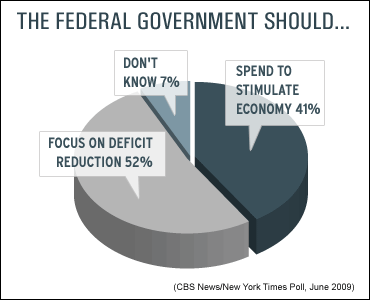From
Theatlantic.comNo that's not a typo: that's the statistic according to USA Today. The folks over there have done some really great work this week with another interesting interactive chart attached to an article about the nation's debt. If they keep this up, I'll have to stop considering it a useless free newspaper I step over when leaving a hotel room. The numbers it reports are staggering.
Again, I wish I could include the interactive chart it shows, but it breaks down the $668,621 by various components of federal government debt ($546,668) and personal debt ($121,953). Presumably that means this astronomical figure does not even include state and local government debt. I thought it might be fun to put this number into perspective.
Because it's pretty hard to identify what the weighted-average interest rate is for this debt, I show a few different scenarios. That way you can decide for yourself which scenario you find most plausible. The interest rate is shown, along with two different time horizons for each scenario. I then provide the amount of money that would be needed to pay off the debt per household, per year.
Scenario #1: 5%
30 years: $43,469
50 years: $36,603
Scenario #2: 3%
30 years: $34,092
50 years: $25,971
Scenario #3: 0%
30 years: $22,274
50 years: $13,364
So in the hopelessly optimistic best case scenario, each American household would have to pay $13,364 per year for 50 years. That is, of course, assuming that the federal government closes the deficit (fat chance), and each household does not incur additional debt (doubtful). And recall: it does not include state and local debt. According to U.S. Census Bureau data, the 2007 median household income was $50,233 -- before taxes. So you can kind of imagine how impossible even the best case scenario of $13,364 per household, per year would be anyway.
I admit this is a gross oversimplification. It does not consider inflation, which is sure to happen, and which will help a bit. But if you assume the above interest rates are real interest rates (nominal interest rate minus inflation), then this might make the 0% scenario a little more likely -- but probably not for 30 or 50 years, I hope. My scenarios also do not consider U.S. population growth, which there undoubtedly will be.
Despite its simplicity, I think this analysis shows just how dire a situation the nation's debt poses. I know there's a popular argument that we've always been in debt, so it's nothing to worry about. As these numbers continue to grow, however, I think the plausibility of that argument wanes.



